Protecting & Restoring Long Island's Peconic Bays
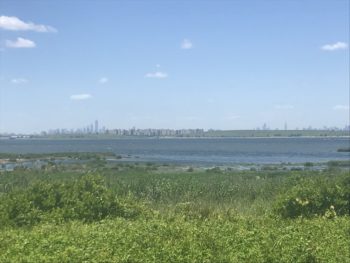
PEP has started its second season monitoring the diamondback terrapins on the East End of Long Island. Our terrapin interns, Kaitlin and Noah, are monitoring terrapin activity at Northwest Harbor County Park in Sag Harbor so we can begin understanding this species’ population and habitat out on the East End.
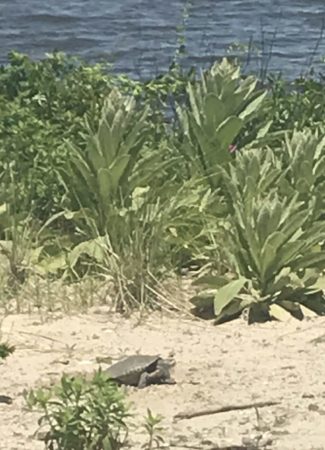
The terrapin interns and I got to spend an awesome day learning terrapin monitoring techniques and exploring the Jamaica Bay Wildlife Refuge alongside Dr. Russell Burke, local terrapin expert and professor at Hofstra University. I had never been to this refuge before, and neither had Kaitlin and Noah. Who knew there was such a beautiful haven for nature right outside the city! When we arrived, there were several birders out on the trail. We walked along the gravel for a while before we found Dr. Burke who was with a group of his volunteers, quietly watching a female terrapin laying eggs! The day was off to a great start. They had already seen several nests laid that morning, but this was our first time seeing a female in action!
We left this turtle to continue her nesting and followed Dr. Burke to a nest that was laid previously that morning. He was going to excavate (a fancy word for “dig up”) this nest for two reasons: to count and weigh the eggs, and to add a device called a temperature logger. This device records the temperature of the nest over a period of about 90 days, and the data is retrieved when the device is dug up and plugged into a computer.
Did you know that the temperature of a turtle nest can determine whether the hatchlings are male or female? Unlike birds and mammals whose sex is determined by chromosomes, many types of turtles are influenced by temperature. This is called “temperature-dependent sex determination.” Warmer temperatures typically lead to clutches (batches of eggs) with more females, while cooler temperatures lead to more males. I once heard someone say the way to remember this is “hot chicks and cool dudes.” The pivotal temperature varies between species, and it’s something that Dr. Burke has been researching.
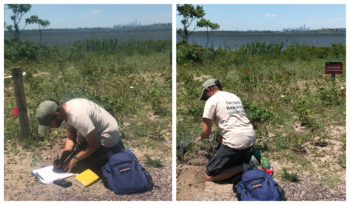
After the eggs were weighed and put back, the temperature logger added, and the nest filled in, Dr. Burke took an extra measure to protect the nest from predators. The “predator exclusion device” is made from chicken wire and prevents raccoons and other hungry predators from getting into the terrapin nest. Later in the season, Dr. Burke and his volunteers will cut holes in the bottom of these devices so the hatchlings can escape safely.
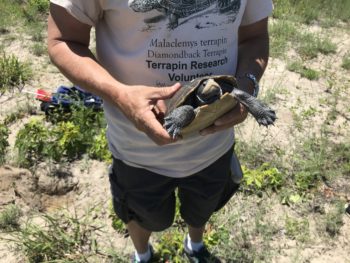
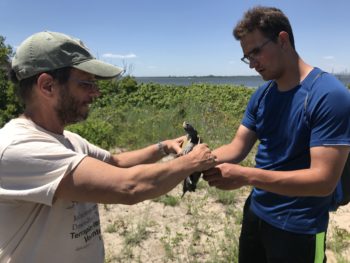
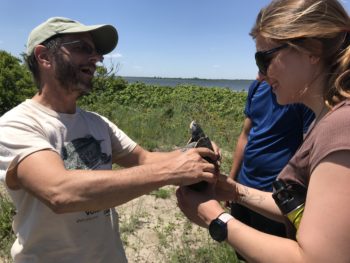
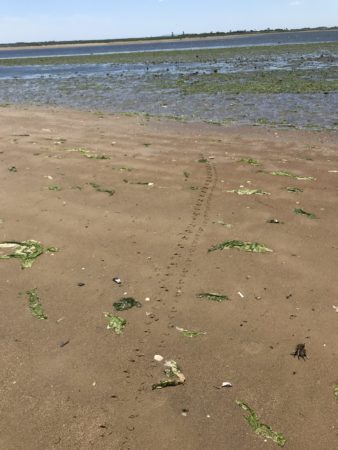
On our way over to the research station, we were met by a couple of volunteers who found a female terrapin. Dr. Burke showed us how we can feel for eggs on the side of the terrapin’s body (see above). This one had laid her eggs already.
Then this female got to experience a little bit of pampering – she got a fresh coat of nail polish! This is a helpful practice because it can show observers from afar that a turtle has already been caught and measured already. If a volunteer sees a turtle with nail polish on its shell, they will know not to bother her because they already have the data on that individual turtle. All they have to do is watch her to see if she lays eggs and then mark the nest when she is done.
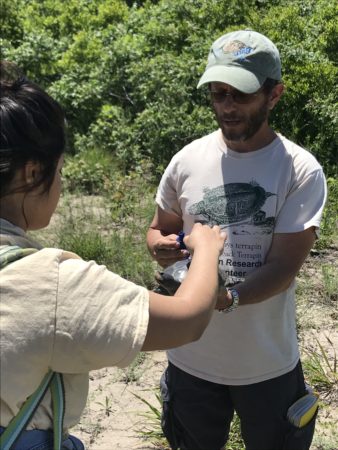
After that, we walked along the beach to head to the research station. We passed “Terrapin Cove” which is a spot where volunteers wait to see terrapins coming up from the water. We also saw some terrapin tracks!
We had so much fun learning from Dr. Burke and observing what he and his volunteers do on a daily basis. It certainly gave us a lot of useful insight for our own terrapin monitoring program on the East End. We hope that one day, our project will grow and we will be up to Dr. Burke’s level! Until then, we will continue our terrapin monitoring out in Northwest Harbor County Park in Sag Harbor, and maybe expand to other locations in the Peconic Estuary in the near future.
Sign up for News, Events and Information straight to your inbox.
